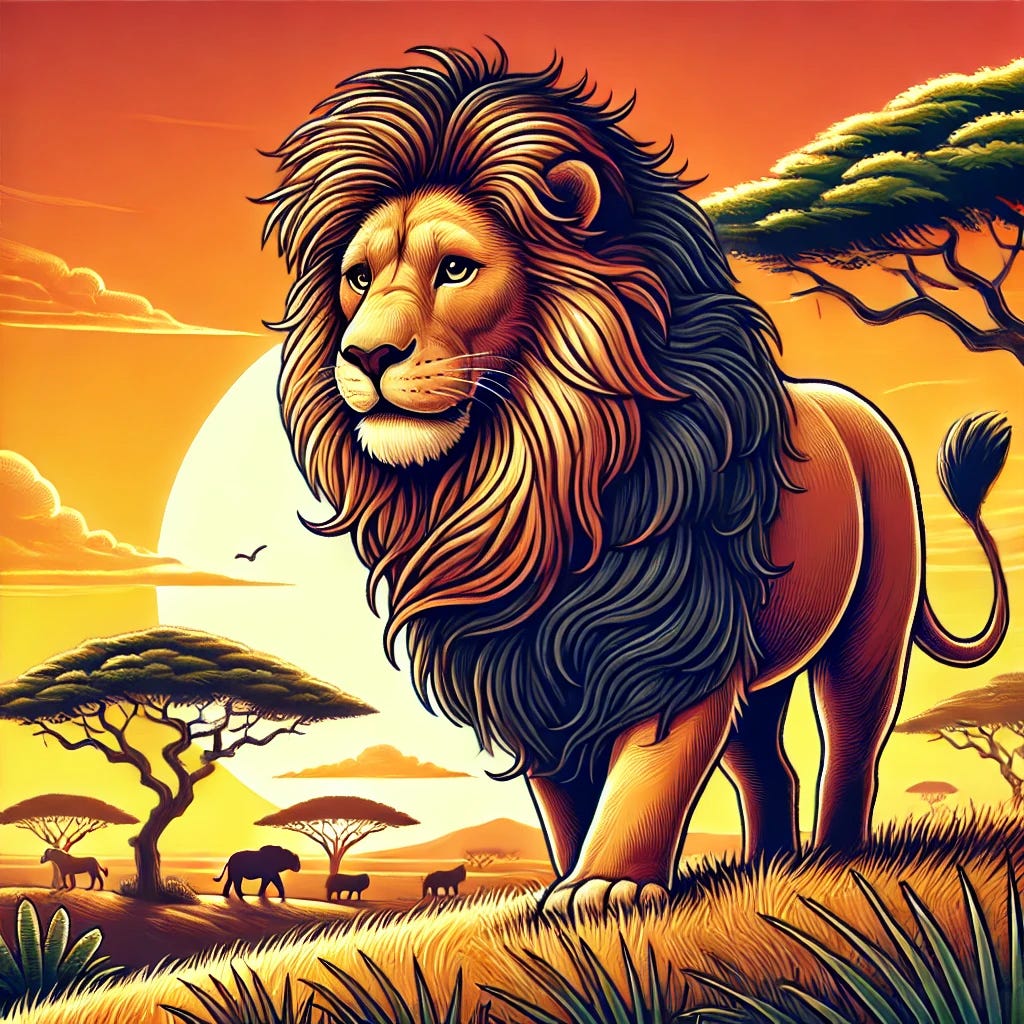The Lion's majestic Mane..
The lion's mane is more than a crown—it's a shield, a symbol of strength, and a key to survival in the wild.
The Majesty of the Lion's Mane: A Crown Fit for a King
The lion's mane is one of nature's most iconic features, symbolizing power, dominance, and beauty. It serves as a testament to the lion's status as the "King of the Jungle" and plays a crucial role in the survival and social structure of these magnificent big cats. Let’s explore the fascinating details behind the mane—from its purpose to its role in lion pride dynamics.
What Makes a Lion's Mane Special?
The mane of a male lion is not just for show. It’s a thick, bushy growth of fur around the head, neck, and shoulders that develops as the lion matures. This feature is unique to lions among big cats and is often considered a crown of kingship in the animal world. But beyond aesthetics, the mane serves several critical functions:
Protection in Battles:
Male lions frequently fight with rivals to defend their pride or territory. The mane acts as a shield, protecting the neck and throat from bites and scratches during these fierce confrontations.
Attracting Mates:
A lion’s mane is a visual indicator of its strength, health, and genetic quality. Lionesses are more likely to choose males with darker, fuller manes as their mates.
Establishing Dominance:
In lion society, a prominent mane signifies maturity and dominance. Lions with larger and darker manes are often perceived as more intimidating by rivals, reducing the likelihood of challenges.
The Science Behind Mane Color and Growth
The appearance of a lion's mane can vary significantly depending on age, genetics, and environmental factors. Here are some intriguing insights:
Color Variations: The mane’s color ranges from light blonde to deep black.
Regional Differences: Lions in cooler climates tend to have thicker, darker manes, while those in hotter areas like Tsavo, Kenya, often have sparser or lighter manes to help them cope with the heat.
Growth Timeline: The mane begins developing around the age of one and reaches full growth by four or five years old. As lions age, their manes may thin out or lighten in color.
Cultural Significance of the Lion's Mane
Throughout human history, the lion’s mane has symbolized courage, strength, and royalty. From ancient myths to modern emblems, the lion’s majestic appearance has inspired countless stories and artworks. The mane, in particular, reinforces the lion’s regal status, making it a universal symbol of leadership and bravery.
A Marvel of Nature
The lion’s mane is more than just a striking feature; it is a multifunctional marvel of nature. From shielding the lion during fights to symbolizing dominance and vitality, the mane plays an integral role in the lion’s life and legacy. It is a feature that not only sets lions apart from other big cats but also reinforces their status as the undisputed kings of the savannah.


